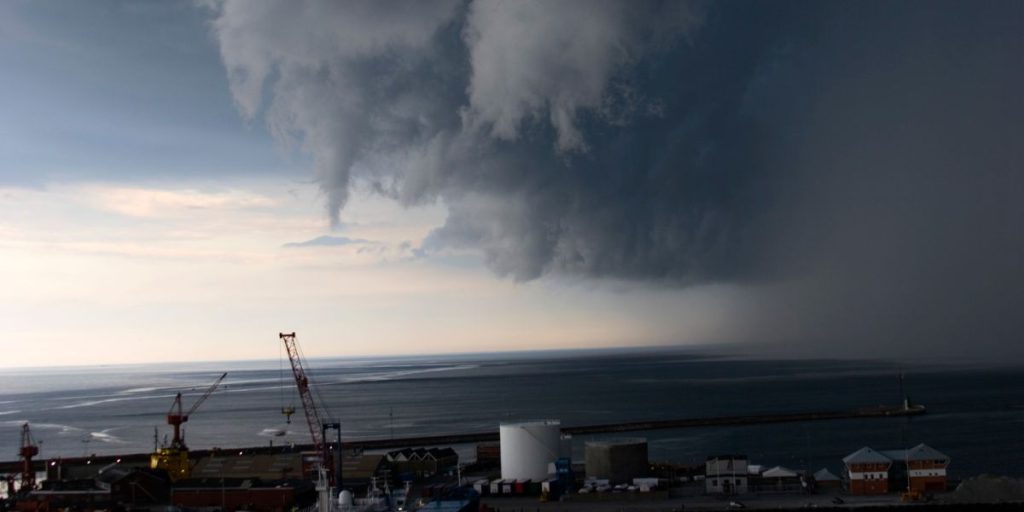
Table of Contents
Introduction
Inclement weather conditions can naturally have adverse effects on industrial work. Sometimes, operations or the entire construction site need to be put to a halt due to inclement weather. This affects the dedicated projects’ overall progress, timelines, and costs. But nature’s fury cannot be avoided. All we can do is be prepared for it so that it causes minimum or no damage to the workers and the workplace.
“How is the weather there?”
This line is a common part of almost every conversation. The answer to this question can be cloudy, sunny, rainy, normal, cold, or even inclement weather.
For some people, this is just a part of the conversation, but for workers in the industrial sector, their daily schedule works around the weather. A considerable number of workers work under the sun every day for dedicated hours. That’s why industries must conduct regular inclement weather risk assessment to ensure smooth and safe operations.
Let’s take a quick look at the types of inclement weather conditions and how they affect different industries.
What Is Inclement Weather And How It Affects Industries
So, what is inclement weather? It refers to severe or harsh weather conditions that pose risks to human safety and hinder regular work operations.
Inclement weather conditions can naturally have adverse effects on industrial work. Sometimes, operations or the entire construction site need to be put to a halt due to bad weather conditions. This affects the dedicated projects’ overall progress, timelines, and costs. But nature’s fury cannot be avoided. All we can do is be prepared for it so that it causes minimum or no damage to the workers and the workplace.
Worried about site safety? Discover how our inclement weather risk assessment tools can help industries minimize downtime and improve preparedness.
Types of Inclement Weather
Lightning and Thunderstorm
Construction sites are particularly vulnerable. The high elevation of looming steel structures, cranes, and boom lifts commonly found on project sites can attract lightning during a storm. Metal materials and equipment can become deadly hazards when struck by lightning. Lightning is generally accompanied by worse weather, like heavy rains or thunderstorms.
Lightning poses the risks of severe accidents, particularly electrocutions, fires, or explosions. Sites must factor this into their inclement weather risk assessment protocols.
Extreme Temperatures
In open sites, inclement weather like sudden temperature shifts interfere with machine operations, increasing the chance of accidents. They affect the workers and the working in more ways than we can think of. Exposure to cold temperatures could cause the body’s internal temperature to fall below the safe limits. As the body begins losing heat, the blood vessels constrict to conserve whatever heat remains within. This could eventually lead to involuntary shivers, cold & numb hands & feet – hypothermia, and if continued that way – less efficient brain collapse & possibly, death of the worker.
Similarly, with hot temperatures, the body gets rid of excess heat when the air temperature increases or the workload is heavy. With the heat pumping more blood, the vessels expand to accommodate and contain the increased flow, leading the blood to circulate on the skin. When the atmospheric temperature & the one of the body are in closer proximity, it makes it difficult for the body’s temperature to cool off. Complex work becomes challenging to perform, leading to the possibility of increased worker accidents, illnesses, etc., along with decreased efficiency.
Extreme temperatures also affect working conditions and employees’ health. Fatigue, overheating, heat stroke, dehydration, or operating machinery with winter gloves can cause serious accidents.
Strong Winds
Strong winds, in themselves, impact normal living conditions incredibly. So, imagine the impact they create on working sites. Extreme winds generate the possibility of loss of hearing, less visibility, and high chances of objects falling, and people working at heights can lose their balance.
Strong winds also heavily impact vehicles. They blow up dust, affect visibility, and even sway the vehicles. Including wind-related risks in the inclement weather risk assessment is crucial for projects involving heights or heavy machinery.
Fog
Fog is one weather condition in which outdoor work must be completely shut down. Zero visibility of objects, persons, and vehicles makes it impossible to work in foggy conditions. Clearly, inclement weather like fog demands operational shutdowns and revised planning.
Imagine a construction site in a fog. When you are unaware of approaching vehicles, digging sites, scaffolds, and more, what are the chances of the work being carried out effectively without causing any near misses or incidents?
How To Be Prepared For Inclement Weather
Mother nature works on her own will. Therefore, we may not be able to avert weather conditions, but we can be prepared for them. Industrial sectors keep workers’ safety at the forefront and they must tighten their seatbelts when it comes to safety regarding inclement weather.
Being prepared for predictable events is easy, but being prepared for unpredictability requires tremendous effort and planning. Well, thanks to technology and innovation, weather conditions can be predicted. This allows us to provide practical solutions and plan the work accordingly.
Warning Systems
Technology allows real-time alerts about inclement weather—lightning, wind speeds, and low visibility. Sensors and warning systems can be planted at heights, on top of vehicles, and at dedicated points to warn if the weather changes suddenly. These sensors detect lightning, wind speeds, rain, and visibility hindrances. Based on the severity of the detection, they send warning signals to the related devices. Therefore, the safety managers can take quick action and stop the work at the site immediately. If the severity is maximum, the warning signals automatically sound hooters or disarm alarm systems to alert the entire area in one go.
Meteorological Service Team
Staying in touch with meteorological departments and using their insights in your inclement weather risk assessment helps businesses plan safer work schedules. A service team must be assigned to keep in touch with the departments for detailed information, especially about the early morning and late night weather forecasts.
Use of Automation and Technology
Organizations have switched to digitalization for seamless work processes. Using smart tools like wet bulb globe temperature monitors or digital weather stations helps forecast what is inclement weather with greater accuracy.
For example, a wet bulb globe temperature technology can estimate the most accurate level of heat stress in direct sunlight. Additionally, a weather station can record daily temperatures and weather changes. This data can be stored and analyzed for further predictions. Weather data can be seamlessly integrated with safety software to make timely and exact predictions.
Be smart with safety. Learn what is inclement weather, how to detect it early. Furthermore, automate your response plans with our cutting-edge solutions.
Some Weather Related Incidents
Inclement weather has caused minimal to tremendous damage in industrial sectors. Here are some incidents caused on the working site due to extreme weather conditions.
In 2018, lightning struck two workers working on the roof in Kansas City, MO. One was killed as he fell off the roof, and the other was seriously injured.
A street cleaner had a stroke and died due to extreme heat in Madrid, Spain.
In 2020, three construction workers were hospitalized in Middleburg, Florida, after being struck by lightning in Clay County.
These are only a few numbers that elevate the risk of inclement weather incidents. Inclement weather is not just a possibility—it’s a recurring challenge. Proactive planning through inclement weather risk assessment can help reduce the chances of similar tragedies.
Conclusion
Safety supervisors must proactively work with the weather department to understand what is inclement weather and respond quickly to its threats. Although weather conditions are unpredictable, the least we can do is prepare for the workplace and be ‘weather-ready.’ This means digging channels to route rainwater, storing harmful substances properly, stacking loose materials, etc.
A well-defined inclement weather risk assessment helps organizations handle hurricanes, rains, fog, or temperature extremes. Introducing an inclement weather policy and implementing safety software for automated action plans helps accelerate rescue plans and operations.
Weather-related incidents can occur even with the best training and comprehensive measures. While we can’t always stop inclement weather, we can be prepared to reduce the intensity of the risks to enhance workers’ safety, health, and well-being.
Don’t wait for the storm to hit—implement our inclement weather risk assessment system. Keep your workers safe and your operations weather-resilient.



